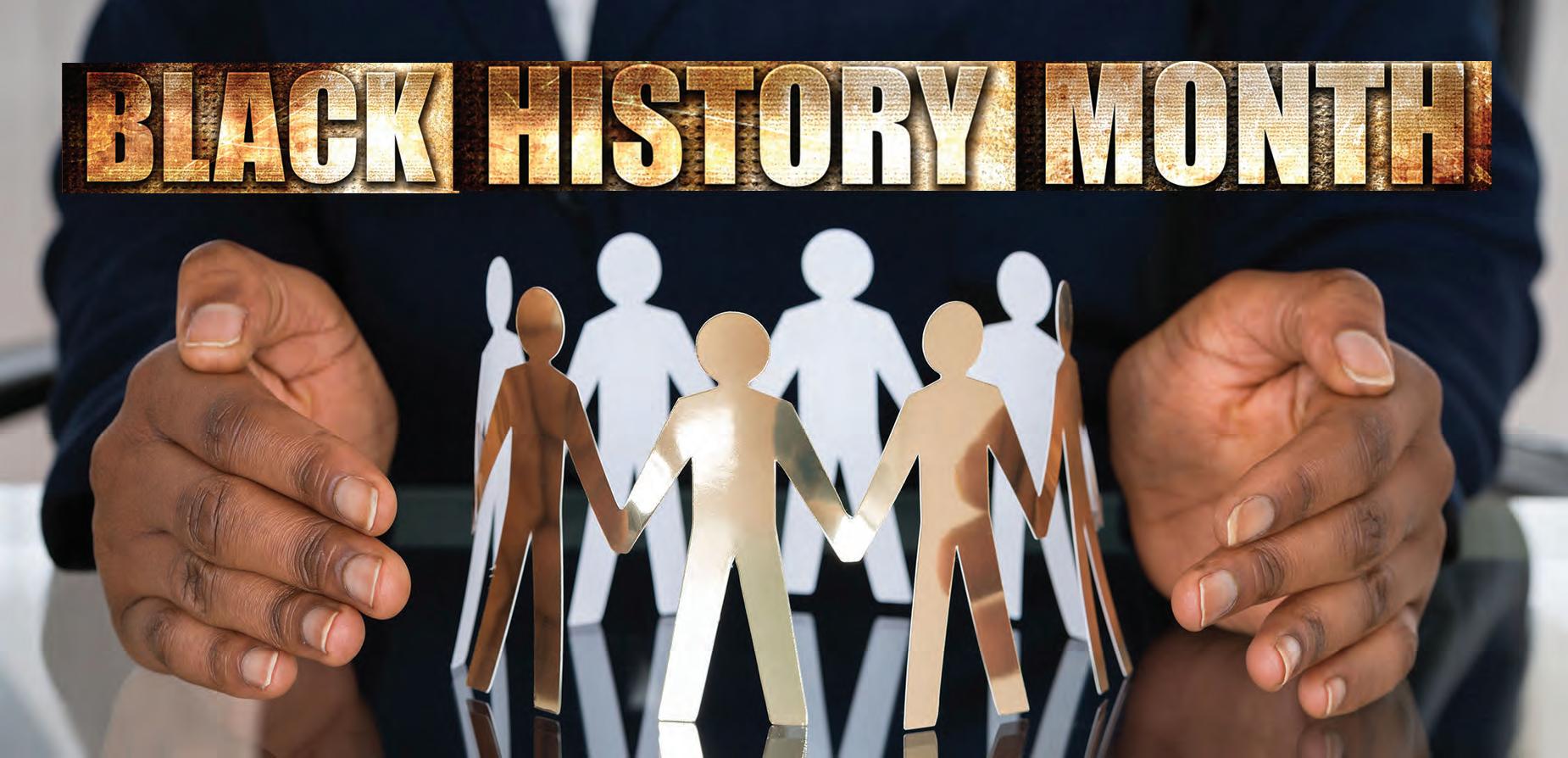11 FACTS ABOUT
STUDENT LIFE F
ebruary is mainly known as the lovey-dovey month of the year because of the infamous holiday Valentine’s Day, which also coincides with Arizona’s birthday, by the way. But what about the bigger elephant in the room? What is Black History Month and how did it come to be the thing it is today? Here are 11 things to know about the history of Black History Month.
#11 • 13TH AMENDMENT
President Abraham Lincoln approved the Joint Resolution of Congress for the 13th Amendment to abolish slavery 155 years ago, on February 1, 1865. This amendment is one of the most important in the history of African Americans in the United States today. This changed the lives of countless African Americans and how they lived their lives, as well as the lives of future generations.
#10 • CANADA CELEBRATES
In December 1995, the House of Commons officially recognized February as Black History Month in Canada following a motion introduced by the first black Canadian woman elected to Parliament, the Honorable Jean Augustine. The motion was carried unanimously be the House of Commons. In 2008, Sen. Donald Oliver moved to have the Senate of Canada officially recognize Black History Month, which was unanimously approved.
#9 • CELEBRATING ABROAD
A Ghanaian analyst by the name of Akyaaba Addai-Sebo, who served as a leader of the special projects for the Greater London Council, organized the first celebration in 1987. They decided to celebrate in October, for one, because it was the autumnal equinox in Africa. It is a period of tolerance and reconciliation in Africa and it is roughly the start of school for most children. In Ireland, Black History Month was a pilot program in Cork in 2010. It wasn’t until October 2014 that all of Ireland celebrated, thanks to the Africa Irish Development Initiatives.
#8 • THE 2020 THEME
Every year, there has been a theme for Black History Month. This year’s is African Americans and the Vote, as 2020 marks the centennial of the 19th Amendment, which gave women the right to vote in this country. This year is also the sesquicentennial, that’s 150 years by the way, of the 15th Amendment, which gave the right to vote for black men. Last year’s theme was Black Migrations and next year’s theme is The Black Family: Representation, Identity and Diversity.
#7 • NAACP
The NAACP, or the National Association for the Advancement of Colored People, was established in February 1909. The founders were interracial activists in New York City who wanted to change the way this country treated people of color. The official first meeting was on February 12, 1909, which was the centennial anniversary of President Abraham Lincoln’s birthday.
#6 • ASALH
The Association for the Study of African American Life and History
4 ECOLLEGETIMES.COM | FEBRUARY 2020
ANNIKA TOMLIN • COLLEGE TIMES
was founded by Carter G. Woodson and four others in 1915. That points to the roots of this month. Their goal was to encourage scholars to engage in the study of African American history, something that was previously neglected in most schools. This organization continues to document and update the history of African Americans.
#5 • THE JOURNAL OF AFRICAN AMERICAN HISTORY
The Journal of African American History was first published in 1916 from the ASALH. What better way to document the history than to write a book about it? This was the first scholarly text or journal to cover African American history. The ASALH is still creating newer additions to the journal and just released its 104th volume.
#4 • PRESIDENT GERALD R. FORD
On February 3, 1975, President Ford gave a “Message on the Observance of Black History Week.” He was the first president to recognize the importance of the week and made a national announcement on the matter. The next year he followed up with another message, but this one was a “Message on the Observance of Black History Month,” instead of just a week. He began this message on February 10, 1976 with, “In the bicentennial year of our independence, we can review with admiration the impressive contributions of black Americans to our national life and culture.”
#3 • MCNARY, ARIZONA
William Cady and James McNary moved their lumber and milling company and its 500 employees from Louisiana to Cooley, Arizona, renaming the town McNary in 1924. Nearly all of those 500 employees that came were African American making this northeastern Arizona town an early black community. The lumber mill was destroyed by a fire in 1979 and many of the city’s black residents relocated, but the city still stands to this day.
#2 • PHILLIPS VS. PUHS
One year prior to the Supreme Court case Brown v Board of Education there was a court case in Arizona that called for the desegregation of the Phoenix Union High Schools that was ruled on February 9, 1953. Judge Fred C. Struckmeyer decided on the case by saying, “A half century of intolerance is enough.” Struckmeyer ruled that the Arizona law permitting school boards to segregate pupils was unconstitutional, and the Phoenix Union district’s segregation of African American students was illegal.
#1 • WHY FEBRUARY?
Black History Month is celebrated in February because of the birthday of Frederick Douglass and President Abraham Lincoln. Douglas was an African American abolitionist, author and orator. President Lincoln was and is still well renowned as the president who issued the Emancipation Proclamation. As a remembrance of their contributions to the African American community through liberation and civil rights, the week of their birthdays was originally Black History Week and then grew into African American History Month. CT







